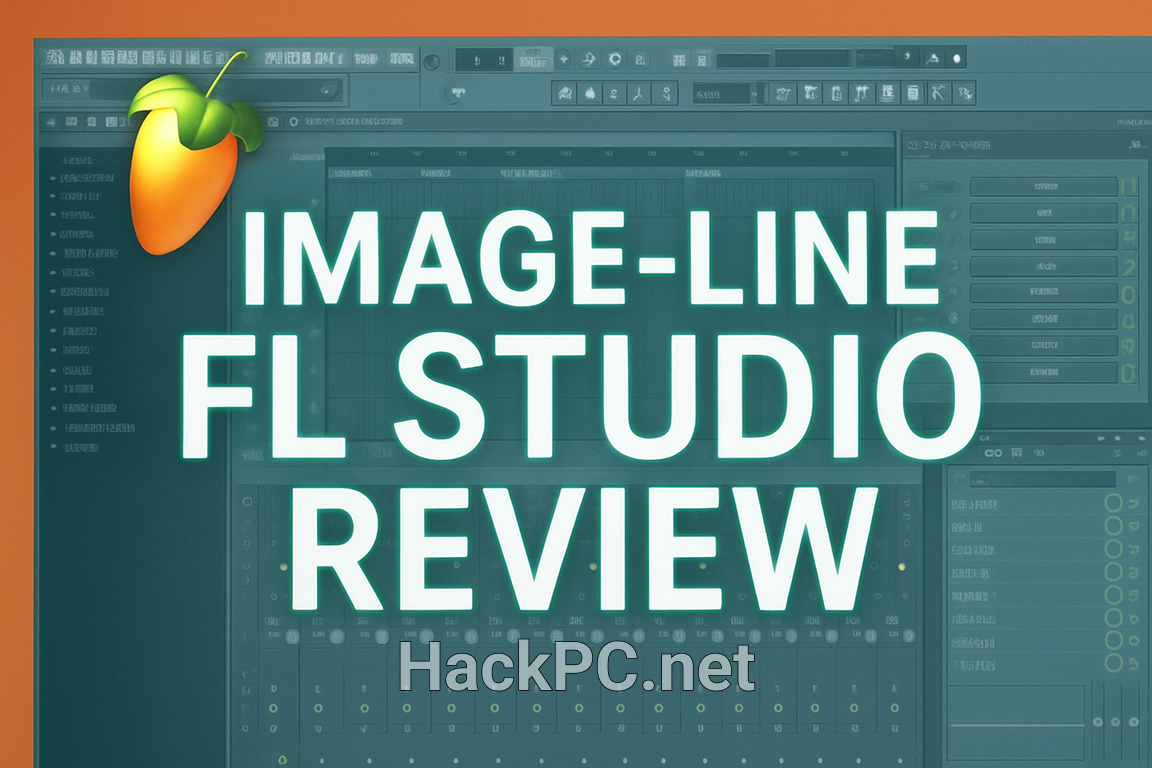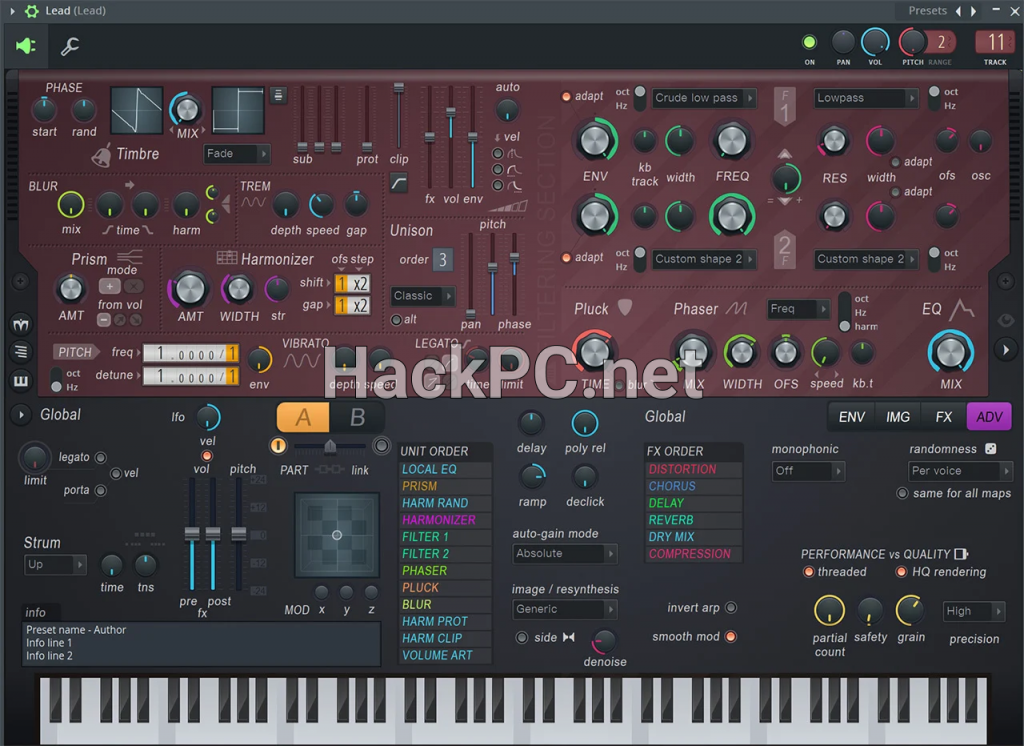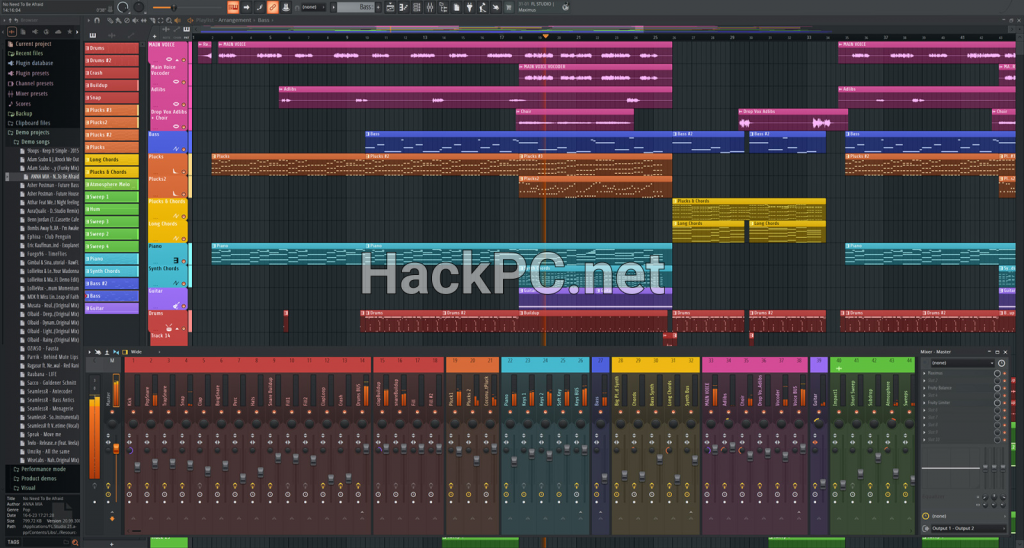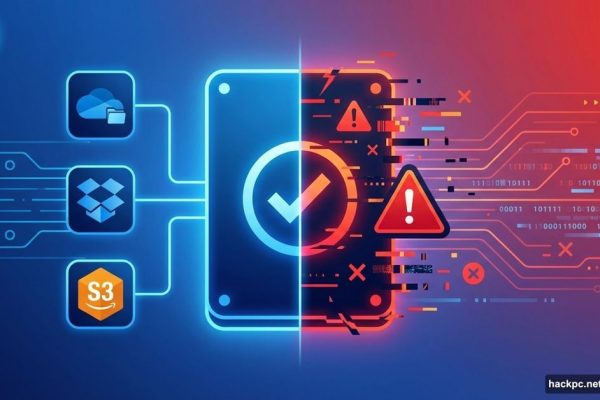
Musicians and producers searching for powerful beat making software face an overwhelming choice between digital audio workstations. FL Studio 2025 emerges as a compelling music production platform that combines decades of refinement with groundbreaking innovations, challenging established DAW conventions while maintaining its signature workflow that millions of electronic music producers have come to master.
Breaking New Ground in Digital Audio Production
FL Studio 2025 introduces dynamic mixer tracks supporting up to 500 channels, revolutionizing how producers handle expansive projects. This massive leap from previous limitations transforms the mixing console experience, particularly for orchestral composers and film scorers who previously struggled with channel restrictions. The implementation feels natural rather than forced, with the ability to remove unused mixer tracks for minimalist productions, demonstrating Image-Line’s understanding that flexibility trumps rigid structure.
The introduction of Loop Starter provides instant genre-based loop stacks pulled from FL Cloud’s vast catalog, addressing the blank project paralysis that plagues both beginners and professionals. Unlike simple template systems found in competing music composition software, this feature intelligently generates contextual starting points while maintaining creative freedom. The dice icon regenerates samples on a per-track or global basis, ensuring endless variation without repetitive patterns.
AI-Powered Assistance Meets Traditional Workflow
Gopher, the integrated AI assistant, responds to questions in your native language about FL Studio and music production. This isn’t marketing fluff—the chatbot genuinely teaches fundamentals faster than any traditional DAW learning curve. While response times occasionally lag behind expectations, the contextual accuracy surpasses generic search results, making this virtual instruments guide invaluable for complex routing scenarios or forgotten keyboard shortcuts.
The synergy between artificial intelligence and human creativity extends beyond simple assistance. The AI chatbot handles music theory questions alongside program-specific queries, bridging the gap between technical proficiency and musical knowledge that often separates bedroom producers from professionals.

Revolutionary Per-Clip Audio Manipulation
Audio clips now feature per-instance stretch, pitch-shift, and reverse capabilities accessible through Alt or Cmd + double-click. This granular control over audio recording elements revolutionizes sample manipulation, rivaling dedicated audio effects processors while maintaining the intuitive piano roll editor workflow FL Studio users expect. The implementation feels organic, eliminating the need for multiple plugin instances or complex routing schemes common in other multitrack recording environments.
Mastering Tools That Compete With Dedicated Solutions
Emphasis brings release-ready mastering with simple controls and crystal-clear sound, challenging the notion that professional mastering requires expensive third-party solutions. This multi-stage mastering compressor/limiter delivers high gain levels while maintaining transparency, positioning FL Studio as a complete production ecosystem rather than just another MIDI sequencer with basic mixing capabilities.
The real-time mastering preview system transforms the traditionally tedious mastering process into an interactive experience, allowing producers to hear changes instantly without committing to renders—a workflow optimization that saves countless hours during final production stages.
Plugin Arsenal and Virtual Instrument Evolution
FL Studio Mobile integration brings 7 instruments and 29 effects to the desktop environment, including sought-after processors like Minisynth, Wow & Flutter, and Tape Stop. This cross-platform pollination enriches the VST instruments palette without bloating the installation, demonstrating smart resource management often lacking in competing professional music software.
Vector-based interfaces for BassDrum, Sakura, and Drumaxx provide high-DPI visuals that scale perfectly. The visual upgrade extends beyond aesthetics—these redesigned automation features respond more intuitively to touch controls and high-resolution displays, future-proofing the interface for emerging hardware standards.
Pricing Strategy That Disrupts Industry Norms
FL Studio Producer Edition at $199 offers exceptional value compared to Ableton Live Standard at $449. The pricing disparity becomes more pronounced considering FL Studio’s lifetime free updates policy, active since 1998. This commitment to user investment protection stands unmatched among competing DAWs, where Ableton and other rivals charge substantial upgrade fees for major versions.
The All Plugins Edition at $499 includes 107 effects and instruments, rivaling bundles costing thousands from established plugin manufacturers. For hip hop production enthusiasts and electronic music creators, this comprehensive package eliminates the need for expensive third-party additions common with Logic Pro competitor setups.
Workflow Optimization for Modern Producers
The new bassline mode in Chord Progression Tool generates instant bass grooves that complement any progression, addressing a common production bottleneck. Unlike static MIDI patterns, these intelligent basslines adapt harmonically, maintaining musical coherence while accelerating the creative process—particularly valuable for trap and EDM producers working under tight deadlines.
Step sequencer improvements and enhanced loop-based production tools cater to contemporary production styles without abandoning traditional linear arrangement capabilities. This dual approach accommodates both old-school beat makers and modern bedroom producers experimenting with hybrid workflows.
Platform Compatibility and System Requirements
While historically Windows-centric, FL Studio’s Mac compatibility has matured significantly. Unlike Logic Pro’s £199 price point that requires expensive Mac hardware investment, FL Studio runs efficiently on modest Windows systems, democratizing professional music production. The beginner-friendly DAW reputation persists, though power users consistently push boundaries previously reserved for Pro Tools or Cubase environments.
The 64-bit architecture requirement eliminates legacy plugin support, forcing some producers to update their arsenals. However, this modernization enables performance optimizations impossible with backward compatibility constraints, resulting in stable operation even with hundreds of active tracks.
Competition Analysis and Market Position
FL Studio’s native plugins like Harmor allow image-to-sound synthesis through simple drag-and-drop, showcasing innovation beyond typical Ableton alternative offerings. While Live excels at performance-oriented features, FL Studio’s production depth appeals to studio-focused creators prioritizing sound design over live manipulation.
Logic Pro’s comprehensive included content competes directly, though FL Studio’s All Plugins Edition provides more stock selection than Ableton or Logic. The distinction becomes crucial for producers avoiding subscription services plaguing modern music software ecosystems.
Real-World Performance Metrics
Testing across various production scenarios reveals consistent strengths. Complex orchestral arrangements utilizing 300+ tracks maintain responsive playback on mid-tier hardware, while CPU optimization allows extensive plugin chains without audio dropouts. The mixing console’s redesigned architecture eliminates bottlenecks plaguing previous versions, though variable-sized buffer compatibility issues persist with certain third-party plugins.
Latency management improved substantially, with intelligent compensation algorithms maintaining phase coherence across parallel processing chains—critical for professional mixing where microsecond discrepancies destroy sonic cohesion. Audio recording stability matches dedicated recording software, dispelling outdated perceptions about FL Studio’s capabilities beyond electronic genres.
Community and Support Ecosystem
The FL Studio forum remains exceptionally active, with beta releases receiving immediate community feedback. Public beta testing began March 13, 2025, demonstrating transparency in development. This open development model contrasts sharply with competitors’ closed ecosystems, fostering user loyalty while accelerating bug resolution.
Educational resources proliferate across platforms, from official documentation to community-created tutorials. The learning curve, while initially steep for complex operations, flattens considerably with Gopher’s contextual assistance supplementing traditional resources.

Future-Proofing Your Investment
FL Studio Remote Version 2 replaces IL Remote with smoother control and tighter integration, signaling continued mobile workflow development. The emphasis on remote production capabilities acknowledges shifting work patterns, where bedroom studios and professional facilities blur increasingly.
Cloud integration through FL Cloud offers optional subscription benefits without mandating ongoing payments—a crucial distinction from competitors forcing users into rental models. The hybrid approach respects both traditional purchase preferences and modern collaborative needs.
Critical Limitations and Honest Assessment
Despite impressive advances, FL Studio 2025 isn’t without shortcomings. Playlist tempo automation issues particularly affect scoring applications, limiting film composer adoption. CC automation access lacks the elegance of Cubase’s implementation, frustrating users migrating from other professional platforms.
The interface, while highly customizable, can overwhelm newcomers accustomed to streamlined alternatives like GarageBand or Reaper. Pattern-based workflows that excel for electronic music sometimes complicate traditional band recording scenarios, requiring mental model adjustments veteran engineers resist.
Final Verdict: A Defining Moment in Music Production Software
FL Studio 2025 transcends its reputation as an entry-level beat maker, delivering professional capabilities that challenge industry giants while maintaining accessibility for newcomers. The combination of revolutionary features like 500-track mixing, AI-powered assistance through Gopher, and comprehensive built-in tools creates an ecosystem where creativity flows unimpeded by technical limitations. At $199 for the Producer Edition with lifetime updates, this release demolishes traditional pricing models while delivering functionality that rivals—and often surpasses—software costing three times more.
Technical Specifications Summary
- Mixer Capacity: Up to 500 dynamic tracks
- Plugin Count: 107 (All Plugins Edition)
- AI Assistant: Integrated Gopher chatbot
- Mobile Integration: 36 additional plugins from FL Studio Mobile
- Mastering: Built-in Emphasis limiter/compressor
- Audio Manipulation: Per-clip stretch, pitch, and reverse
- Platform Support: Windows and macOS
- Update Policy: Lifetime free updates
- Starting Price: $99 (Fruity Edition)
- Professional Edition: $199 (Producer Edition)
Who Should Consider FL Studio 2025?
Ideal for:
- Electronic music and hip-hop producers seeking comprehensive beat making tools
- Budget-conscious musicians wanting professional features without subscriptions
- Existing FL Studio users benefiting from free lifetime updates
- Producers valuing extensive built-in plugin libraries
- Musicians preferring pattern-based composition workflows
Less suitable for:
- Film composers requiring advanced tempo mapping
- Engineers primarily recording live bands
- Mac users already invested in Logic Pro ecosystem
- Producers needing extensive hardware controller integration



Comments (0)